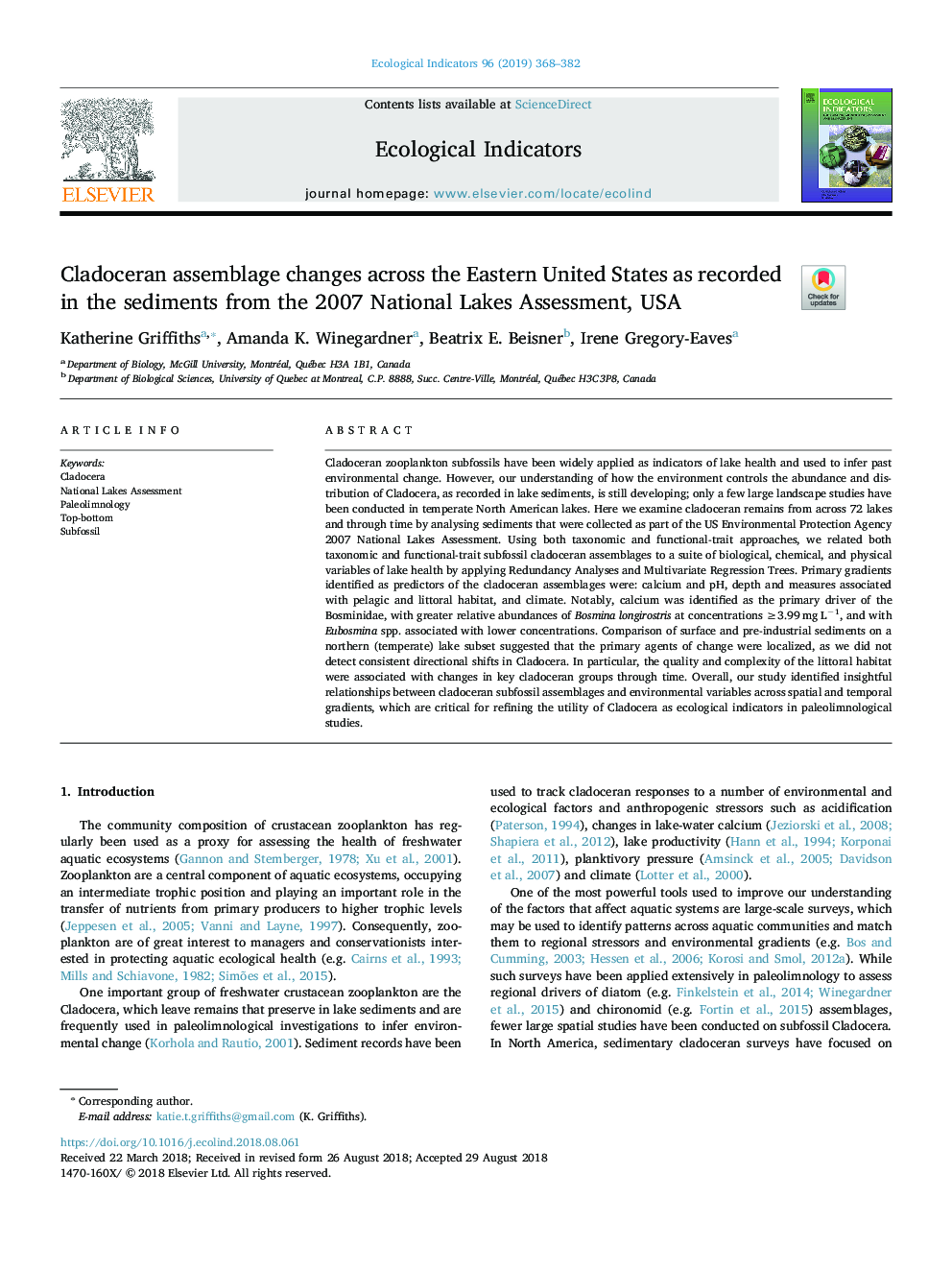| Article ID | Journal | Published Year | Pages | File Type |
|---|---|---|---|---|
| 10144255 | Ecological Indicators | 2019 | 15 Pages |
Abstract
Cladoceran zooplankton subfossils have been widely applied as indicators of lake health and used to infer past environmental change. However, our understanding of how the environment controls the abundance and distribution of Cladocera, as recorded in lake sediments, is still developing; only a few large landscape studies have been conducted in temperate North American lakes. Here we examine cladoceran remains from across 72 lakes and through time by analysing sediments that were collected as part of the US Environmental Protection Agency 2007 National Lakes Assessment. Using both taxonomic and functional-trait approaches, we related both taxonomic and functional-trait subfossil cladoceran assemblages to a suite of biological, chemical, and physical variables of lake health by applying Redundancy Analyses and Multivariate Regression Trees. Primary gradients identified as predictors of the cladoceran assemblages were: calcium and pH, depth and measures associated with pelagic and littoral habitat, and climate. Notably, calcium was identified as the primary driver of the Bosminidae, with greater relative abundances of Bosmina longirostris at concentrations â¥3.99â¯mgâ¯Lâ1, and with Eubosmina spp. associated with lower concentrations. Comparison of surface and pre-industrial sediments on a northern (temperate) lake subset suggested that the primary agents of change were localized, as we did not detect consistent directional shifts in Cladocera. In particular, the quality and complexity of the littoral habitat were associated with changes in key cladoceran groups through time. Overall, our study identified insightful relationships between cladoceran subfossil assemblages and environmental variables across spatial and temporal gradients, which are critical for refining the utility of Cladocera as ecological indicators in paleolimnological studies.
Keywords
Related Topics
Life Sciences
Agricultural and Biological Sciences
Ecology, Evolution, Behavior and Systematics
Authors
Katherine Griffiths, Amanda K. Winegardner, Beatrix E. Beisner, Irene Gregory-Eaves,
